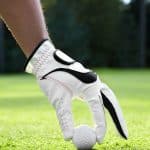As our young golfers grow and develop, their training needs change. This is where skill acceleration strategies come in handy. Skill acceleration goes beyond traditional practice, utilizing various techniques to enhance the development process. Recognizing such strategies is essential for making the most out of their practice time and helping them reach their full potential. This article will delve into the best strategies for accelerating skill development in junior golfers, covering a range of topics from swing training to strength development.
Swing Training
In the world of golf, the swing is everything. It’s the foundation of every shot, the difference between a birdie and a bogey. For junior golfers, mastering the swing at an early age is crucial for future game performance.
A lire également : What’s the Role of Virtual Wind Tunnels in Optimizing Aerodynamics for Racing Cyclists?
When it comes to swing training, the smart use of technology can be a game-changer. Golf swing analyzers, which couple to clubs and measure a wide variety of swing parameters, provide invaluable quantitative feedback. They can track the speed of the swing, the angle of the club at impact, and the path of the club before and after impact. Using this information, golfers can work on refining their technique and bolstering their swing consistency.
It’s crucial to remember that it’s not about achieving the fastest swing speed, but the most efficient one. The goal is to attain a swing that consistently delivers the ball to the target with the least amount of effort and strain on the body.
A lire également : How Can Wearable Muscular Oxygen Sensors Improve Endurance in Elite Cross-Country Skiers?
The Role of Strength Training
While golf may appear to be a lesser physical sport compared to others like football or basketball, strength plays a pivotal role in a golfer’s performance. Strength training exercises targeting the core, legs, and arms can have significant positive impacts on a golfer’s game.
A study published on PubMed revealed that an eight-week strength training program led to a significant increase in club head speed among junior golfers (DOI:10.1002/smi.2464). It demonstrates the importance of strength training as a strategy for skill acceleration.
Implementing a well-rounded strength training regime that focuses on developing the muscle groups most utilized in golf – such as the gluteus maximus, pectoralis major, and latissimus dorsi – can help junior golfers hit the ball further.
The Power of Practice
The saying, "practice makes perfect," holds a lot of truth, especially in golf. It’s through practice that junior golfers will refine their skills and become better players.
Practice, however, needs to be strategic. An effective practice regime for golfers should incorporate drills that mimic game situations, variable training to adapt to different scenarios, and blocked practice for the repetition of specific skills.
Furthermore, incorporating mental strategies into practice sessions can also be beneficial. Golf is a game of mental toughness, and training the mind to handle pressure situations is just as important as physical training.
The Scholar Approach to Training
The scholar approach to training refers to incorporating scientific, evidence-based strategies into sports training. This approach involves keeping abreast with the latest research and integrating proven techniques into training.
In golf, the scholar approach might involve using advanced technologies like high-speed cameras and launch monitors to better understand and improve swing mechanics. Additionally, it could include educating junior golfers about the science behind the sport, such as the physics of the golf swing and the biomechanics of the body’s movements during the swing.
The Importance of a Good Coach
A good coach can have a significant effect on a junior golfer’s skill development. Coaches serve as mentors, trainers, and guides in a golfer’s journey. They provide the necessary feedback and guidance that can help a golfer improve their game.
Coaches can provide personalized training regimes, help golfers understand their strengths and weaknesses, and develop strategies to enhance their skills. The right coach will be able to identify areas where a golfer struggles and provide practical solutions to overcome these challenges.
In conclusion, accelerating skill development in junior golfers involves a multi-faceted approach, encompassing swing training, strength training, effective practice strategies, a scholarly approach to training, and a good coach’s guidance. Implementing these strategies will ensure junior golfers make the most of their training time and reach their full potential in the game of golf.
The Application of Motor Learning
Motor learning involves a permanent change in the ability to perform a skill as a result of practice or experience. It’s an essential part of skill development, particularly for junior golfers.
In the context of golf, motor learning can encompass a variety of elements. One key aspect is the coordination and sequencing of the golf swing. This involves the rotation of the body, the movement of the arms and legs, and the grip on the club. It’s a complex process that requires a lot of practice to master.
Another critical facet of motor learning in golf is distance control. This involves understanding how different types of swings and club selections affect the distance the golf ball travels. Junior golfers need to learn how to adjust their swing based on the distance they want the ball to go.
A good place to start with motor learning is at a golf camp. These camps often provide a structured environment where junior golfers can get professional instruction, engage in targeted practice, and learn from experienced players.
Additionally, resources like Google Scholar and PubMed can provide valuable insights into the latest research on motor learning and its application in golf. This can help golfers and their coaches design more effective training programs.
Incorporating Long-Term Strength Conditioning
Strength conditioning is a critical aspect of junior golfers’ development. It’s not only about building muscle mass but also about enhancing functional strength, stability, and flexibility, all of which are key for golf performance.
Long-term strength conditioning means integrating regular strength training into a golfer’s routine over an extended period. The focus should be on improving golf-specific strength, which involves the muscle groups used most in the golf swing.
For example, the gluteus maximus is crucial for generating power in the golf swing. Strengthening this muscle through exercises like squats and lunges can help golfers swing the club faster, which can lead to longer drives.
Similarly, strengthening the pecs and lats can improve the stability and control of the golf swing, leading to more consistent shots.
A long-term strength conditioning program should be carefully designed and personalized based on the golfer’s specific needs and goals. It should also consider the golfer’s age, current fitness level, and any potential injuries or health concerns.
The DOI PubMed and journal strength are great resources for finding free articles on the subject, which can provide helpful insights into designing effective long-term strength conditioning programs.
Accelerating skill development in junior golfers is about more than just spending more time on the golf course. It requires a strategic approach that encompasses various elements, from swing training and strength conditioning to motor learning and the guidance of a good coach.
Technology and scientific research can play a crucial role in this process. Tools like golf swing analyzers and resources like Google Scholar, DOI PubMed, and other free articles can provide valuable insights and data to boost the effectiveness of training programs.
Ultimately, the goal is to help junior golfers become better players, whether they aspire to play golf professionally or simply want to improve their game for personal enjoyment. Regardless of their goals, the strategies discussed in this article can help them reach their full potential in the sport.











